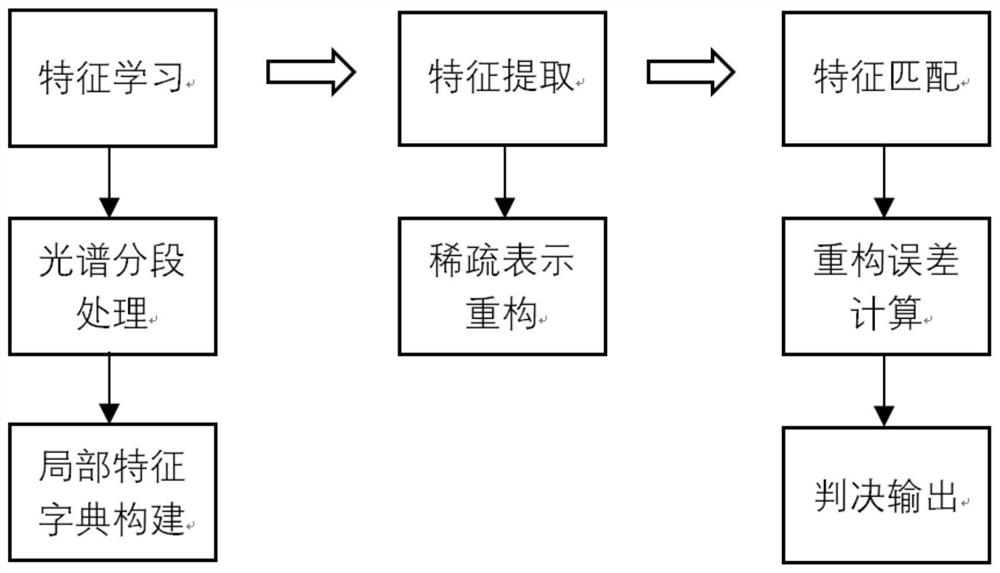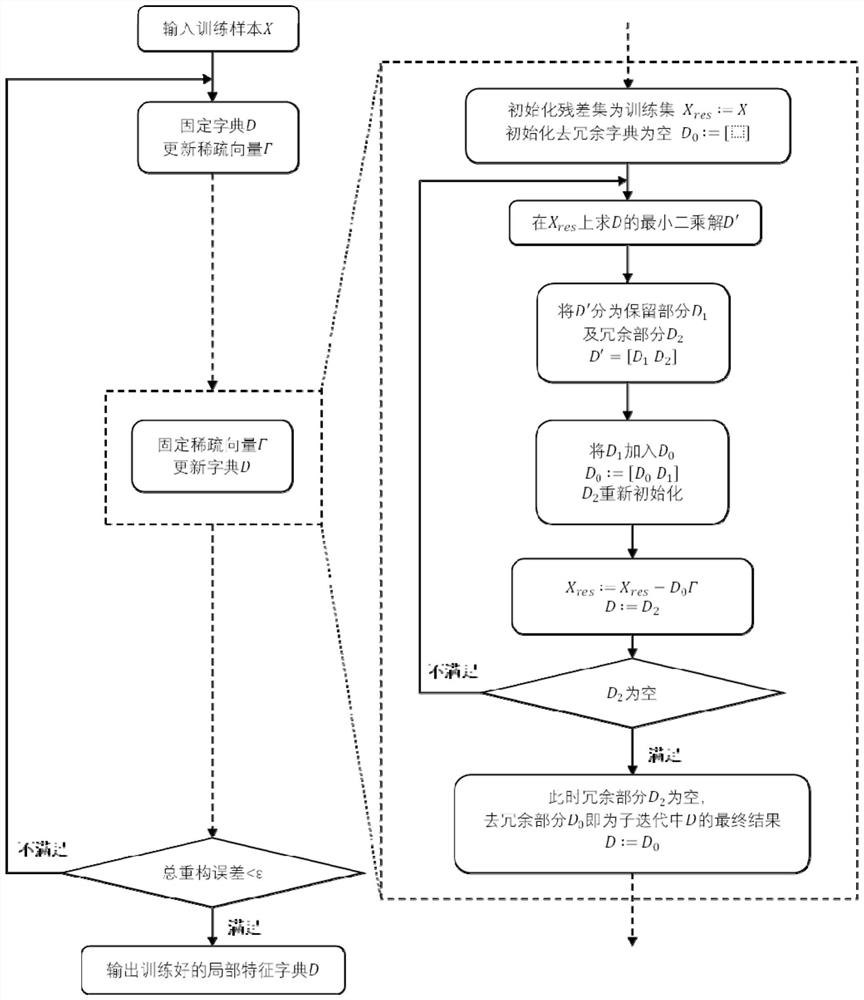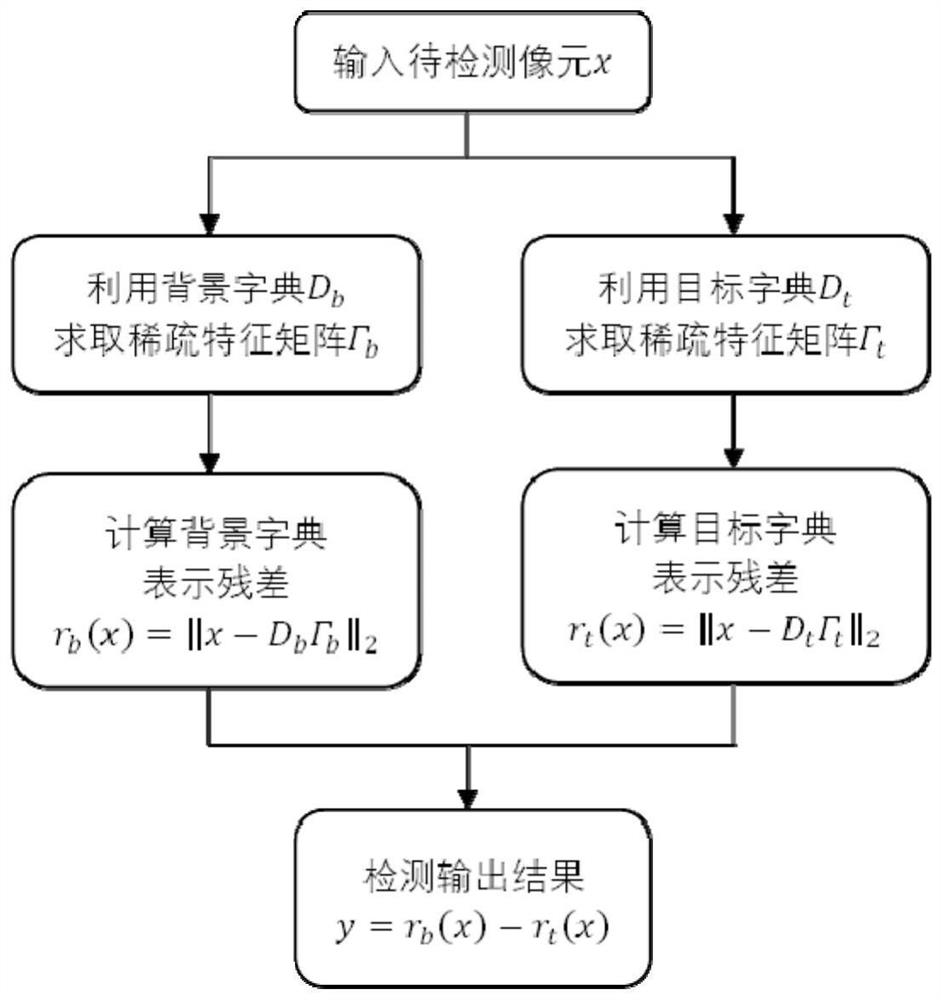A Target Recognition Method for Hyperspectral Remote Sensing Images Based on Segmented Sparse Representation
A hyperspectral remote sensing and sparse representation technology, applied in the field of remote sensing image processing and computer vision, can solve the problems of performance degradation, difficulty in accurate and detailed consideration, poor robustness of spectral features, etc. The effect of credibility
- Summary
- Abstract
- Description
- Claims
- Application Information
AI Technical Summary
Problems solved by technology
Method used
Image
Examples
Embodiment Construction
[0037] The present invention will be described in detail below with reference to the accompanying drawings and examples.
[0038] The present invention provides a hyperspectral target detection method based on sparse representation and dictionary learning, such as figure 1 As shown, it is divided into three main steps, namely feature learning, feature extraction and feature matching. First, the spectral segmentation is combined with sparse representation and dictionary learning, and the local feature dictionary of the target and background spectra is learned and constructed, which includes the following steps 1 and 2. Secondly, the target and background local feature dictionaries are used to extract the sparse features of the pixels to be detected, which includes the following step three. Finally, use the sparse features extracted in the previous step to compare the reconstruction errors of the two, and set the indicators for the judgment output of the detection results, whic...
PUM
 Login to View More
Login to View More Abstract
Description
Claims
Application Information
 Login to View More
Login to View More - R&D
- Intellectual Property
- Life Sciences
- Materials
- Tech Scout
- Unparalleled Data Quality
- Higher Quality Content
- 60% Fewer Hallucinations
Browse by: Latest US Patents, China's latest patents, Technical Efficacy Thesaurus, Application Domain, Technology Topic, Popular Technical Reports.
© 2025 PatSnap. All rights reserved.Legal|Privacy policy|Modern Slavery Act Transparency Statement|Sitemap|About US| Contact US: help@patsnap.com



